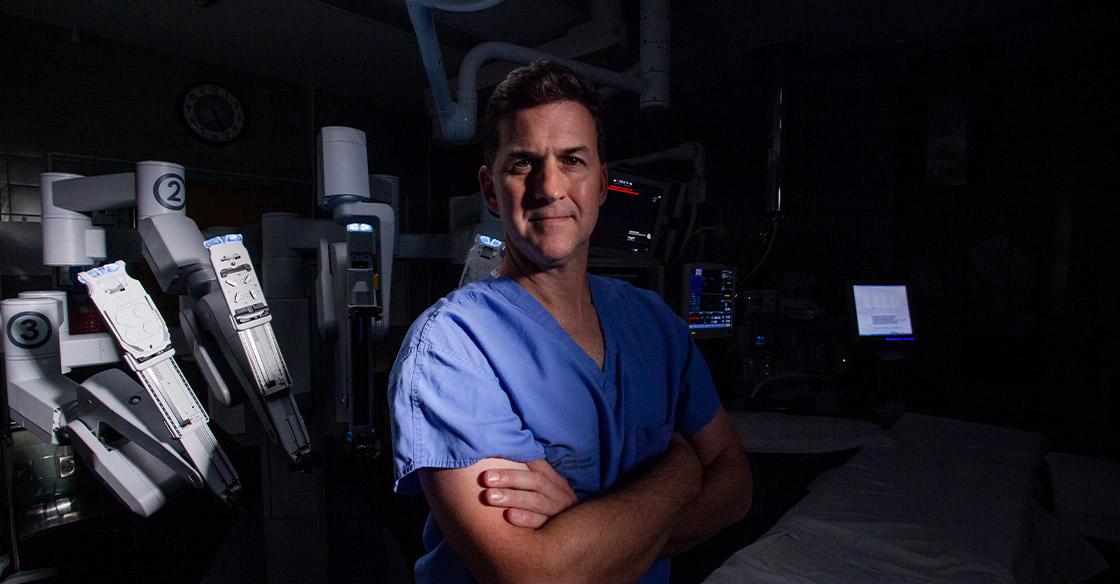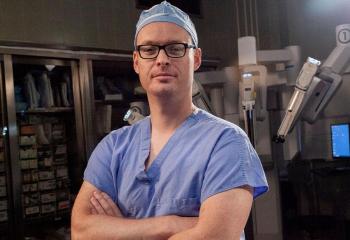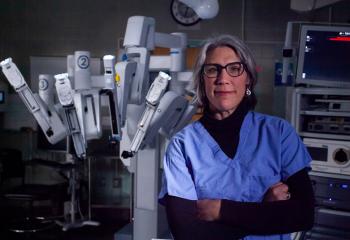
Originally published on TheGlobeandMail.com.
The QEII Health Sciences Centre in Halifax is now home to Atlantic Canada’s first surgical robotics technology.
The robot is currently being trialed in urology and gynecology at the QEII, helping Nova Scotian men and women with cancer. For example, robot-assisted surgery is now a treatment option for the one-in-seven men who develop prostate cancer and face a prostatectomy, which is complete removal of the prostate.
“As a man nearing the age of 50, it hits home,” says Dr. Greg Bailly, professor and chief of urology at the QEII. “I haven’t had any personal experiences with prostate cancer, fortunately to this point, but I’ve spent my career treating those who have.”
Robot-assisted surgery is a minimally-invasive procedure that dramatically reduces pain, recovery time, risk of infection, and even the recurrence of cancer.
As co-chair of the new robotics council, Dr. Bailly is part of the team developing a surgical robotics program at the QEII; Atlantic Canada’s largest adult health sciences centre. “Right now, we’re using it for prostate, kidney and uterine cancer – it’s exciting to be able to offer state-of-the-art surgical procedures to our patients.”
To keep the robot at the QEII and expand its use to other surgeries, the QEII Foundation is calling on the community to help fund this technology. The $8.1-million project will be entirely donor-driven, with $2.8 million left to raise.
In addition to its role in providing the best care, surgical robotics elevates physician recruitment and retention.
“We want to recruit the brightest and best, in particular those who want to return to Canada following their specialized training,” says Dr. Bailly. “It’s important to provide the environment and technology they need to be able to use their skills.”
Access to surgical robotics has already played an integral role in the recruitment of four new surgeons to the QEII.
One of the newest recruits is urologist Dr. Ross Mason, who completed a fellowship at the world-renowned Mayo Clinic. “It was one of the most exciting moments in my career when I walked into the O.R. and saw the QEII’s first surgical robot,” Dr. Mason says.
According to Dr. Mason, the ability to offer robot-assisted surgery to his patients is a big reason why he chose to return to his home province of Nova Scotia following his specialized training in the U.S.
But, it’s not just the surgeon in the robotic operating suite. Resident doctors, anesthesiologists, and nurses, like Tony Blinkhorn, are part of an integrated surgical team. Blinkhorn is an O.R. nurse with a passion for technology.
“We needed to develop a robotic nursing team, and we needed a leader,” says Dr. Bailly. “Tony has embraced that position wholeheartedly.”
Present at every robot-assisted surgery, Blinkhorn trains other nurses on the new technology and ensures the program runs smoothly, from the O.R. to managing inventory.
“It’s revolutionary for our region,” says Blinkhorn. “Today, we’ve done nearly 100 cases and it’s really just the beginning of what we’re able to provide to our patients.”
There’s no question that surgical robotics attracts some of the country’s best healthcare providers to the centres where they make their careers, however, Blinkhorn is a prime example of how it can also help keep those leaders here.
“People receive excellent treatment at the QEII, and a big part of that is recognizing the importance of funding advances in technology and medicine,” says Dr. Bailly.
At the heart of every major innovation at the QEII are Foundation donors. Surgical robotics is no exception.
“Donors to this campaign are unlocking treatment options that otherwise wouldn’t be available in our region,” says Dr. Bailly. “We’re so grateful we’re able to offer this to our patients.”
To learn more or donate, visit QE2Robotics.ca.

